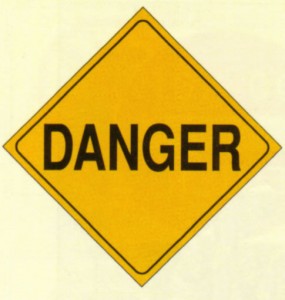I See What You Mean
 How often do we say “OK, I get the picture” when someone is explaining or trying to make a point? There is a lot in that phrase. I believe that often a thousand words can be worthless, yet a picture can be priceless. The picture can be priceless because we are wired to understand patterns and for some communications we can see and understand more from a picture than we can from what we read or hear. Imagine having to get from here to somewhere we’ve never been to and having the choice of listening to directions that may involve twenty or thirty turns and changes, versus written directions, or a map. Say that map also had pictures of what to expect along the way. I’d pick the map.
How often do we say “OK, I get the picture” when someone is explaining or trying to make a point? There is a lot in that phrase. I believe that often a thousand words can be worthless, yet a picture can be priceless. The picture can be priceless because we are wired to understand patterns and for some communications we can see and understand more from a picture than we can from what we read or hear. Imagine having to get from here to somewhere we’ve never been to and having the choice of listening to directions that may involve twenty or thirty turns and changes, versus written directions, or a map. Say that map also had pictures of what to expect along the way. I’d pick the map.
Visual signals work across all kinds of disciplines and environments. Courses to improve our memory utilize mental pictures as the medium for us to retain important information. TV news has increasing viewership while printed news is disappearing as a media. Visual signals can also transform workplaces and have led to remarkable improvements in performance and communications. A picture is an integrated medium, while written or spoken are linear mediums. With the written and spoken word, we often have to hear the end of the message to fully understand the beginning of the message. That process has a long track record of failing, dependent on writer, medium, environment, and reader to all work precisely well. A picture has a lot more going for it in getting a message across.
Something very exciting is happening. Something that is very likely going to save and extend lives, lower personal and societal costs, and will surely stir up some noise. An urgent message that has lived in a very unremarkable background, written in dull language and situated on the sidelines is about to become graphic and taking center stage, in our face, and unavoidable. This message will be impossible to ignore and its intent and meaning will be unambiguous.
The Food and Drug Administration has taken decisive action to help us get the picture. As part of their program to eliminate some risks to life and health and warn current and potential smokers of the risks they face, they are moving to require very graphic images on cigarette packs, ugly pictures. These images will cover over 50% of the packages and will display the horrific side of death and disease from smoking. The proposed messaging is eye popping and disturbing, unavoidable and engaging. From lung cancer to death, the pictures will be provocative and hopefully evocative, driving an important message home. It will not interfere with free choice, but may well improve the quality of informed choices. They will be tough reminders to current smokers and severe warnings to potential ones.
An interesting tidbit is that years ago, a major cigarette brand displayed a virile cowboy as the image to attract customers. The actor in the photos died emaciated from the ravages of lung cancer. This program may well produce the picture that is worth a thousand lives.
How powerful would a similar strategy be in our workplaces when attacking unsafe behavior, waste, or poor quality?

